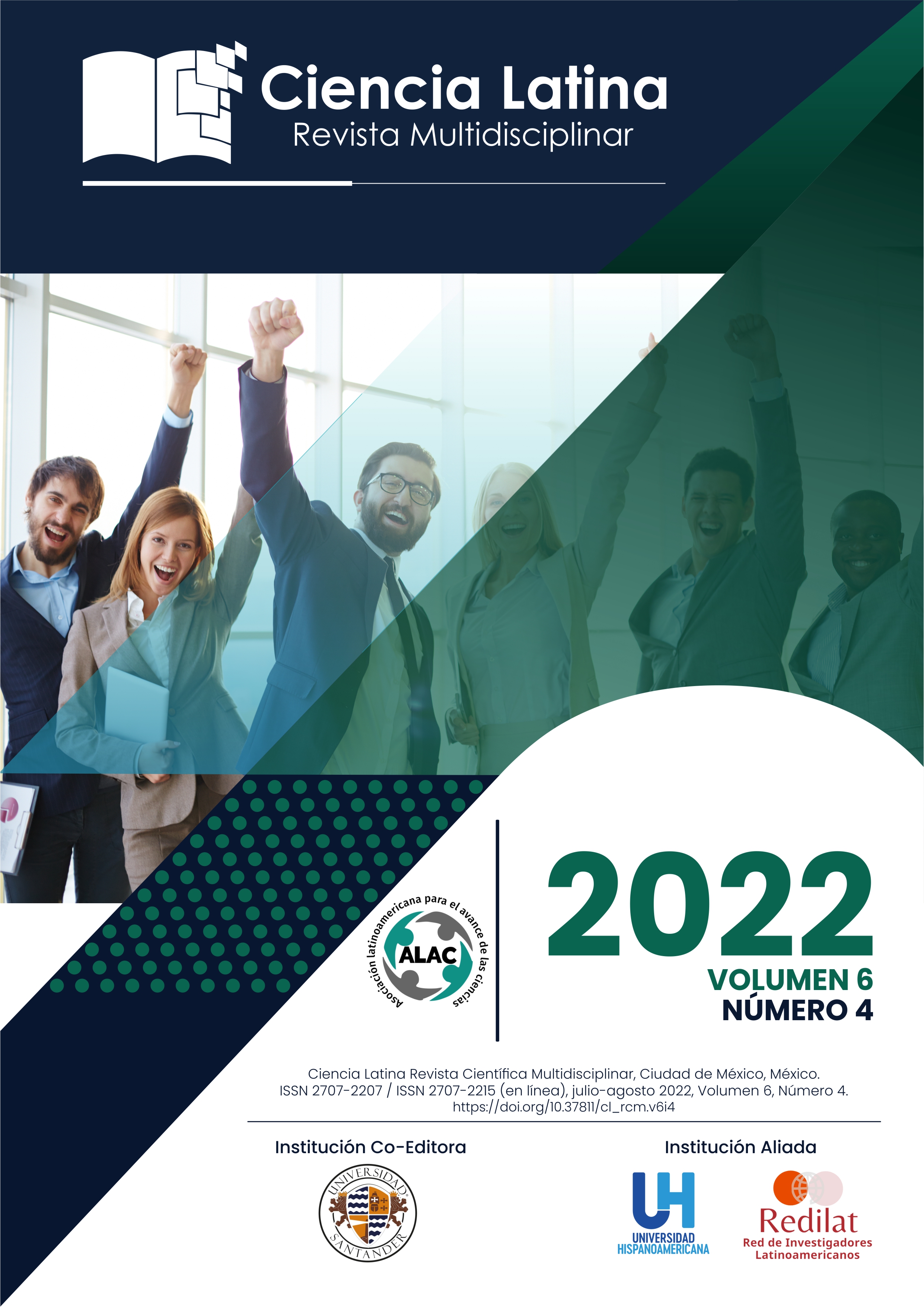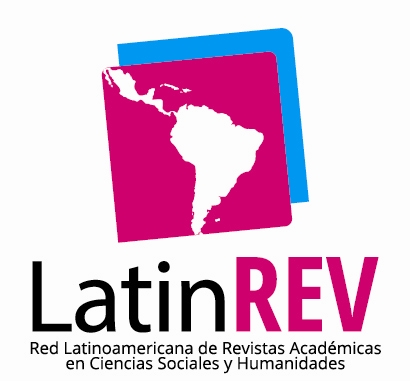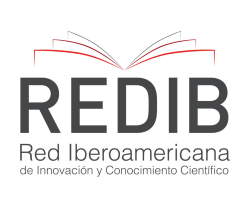Trauma infantil y desconexión moral en estudiantes de educación superior mediante las ecuaciones estructurales
Resumen
Existen estudios que evidencian de que el maltrato infantil conduce a varios tipos de conductas inmorales como el comportamiento violento, el robo, la mentira, entre otros. Por lo que el objetivo de la presente investigación fue explorar la relación entre el maltrato infantil y la desconexión moral. En el estudio participaron 310 estudiantes de educación superior de Lima y Ayacucho. Como instrumentos se utilizaron el cuestionario de maltrato Infantil (CTQ-SF) y la Escala de Mecanismos de Desconexión Moral. Para el procesamiento de datos se empleó la función sem de la librería lavaan del software estadístico R.
Para contrastar la hipótesis planteada se empleó el modelo de ecuaciones estructurales. Los resultados obtenidos indican que el maltrato infantil influye en forma directa y estadísticamente significativo en la desconexión moral (p<0.05); lo que significa que si un individuo ha sido frecuentemente víctima de maltrato infantil cuando fue niño (a), entonces aumentará su probabilidad de tener altos niveles de conductas inmorales y baja sensibilidad moral en edad adulto.
Descargas
Citas
Bandura, A. (1990). Selective Activation and Disengagement of Moral Control. Journal of Social Issues, 46(1), 27-46. https://doi.org/10.1111/j.1540-4560.1990.tb00270.x
Bandura, A., Barbaranelli, C., Caprara, G. V., & Pastorelli, C. (1996). Mechanisms of Moral Disengagement in the Exercise of Moral Agency. Journal of Personality and Social Psychology, 71(2), 364-374. https://doi.org/10.1037/0022-3514.71.2.364
Bandura, A., Caprara, G. V., & Zsolnai, L. (2000). Corporate transgressions through moral disengagement. Journal of Human Values, 6(1), 57-64. https://doi.org/10.1177/097168580000600106
Baugh, L. M., Cox, D. W., Young, R. A., & Kealy, D. (2019). Partner trust and childhood emotional maltreatment: The mediating and moderating roles of maladaptive schemas and psychological flexibility. Journal of Contextual Behavioral Science, 12(June 2018), 66-73. https://doi.org/10.1016/j.jcbs.2019.02.001
Bernstein, D. P., Ahluvalia, T., Pogge, D., & Handelsman, L. (1997). Validity of the childhood trauma questionnaire in an adolescent psychiatric population[Validez del cuestionario de trauma infantil en una población psiquiátrica adolescente]. Journal of the American Academy of Child and Adolescent Psychiatry, 36(3), 340-348. https://doi.org/10.1097/00004583-199703000-00012
Bland, V. J., Lambie, I., & Best, C. (2018). Does childhood neglect contribute to violent behavior in adulthood? A review of possible links. Clinical Psychology Review, 60, 126-135. https://doi.org/10.1016/j.cpr.2018.02.001
Contijoch, M. (2014). Teoría de los esquemas: de la teoría a la práctica. En Compresión de lectura en lengua extranjera: bases para su enseñanza (1.a ed., pp. 29-40). Universidad Nacional Autónoma de México. https://ru.enallt.unam.mx/jspui/bitstream/ENALLT.UNAM/560/4/560.pdf
Dong, M., Anda, R. F., Felitti, V. J., Dube, S. R., Williamson, D. F., Thompson, T. J., Loo, C. M., & Giles, W. H. (2004). The interrelatedness of multiple forms of childhood abuse, neglect, and household dysfunction. Child Abuse and Neglect, 28(7), 771-784. https://doi.org/10.1016/j.chiabu.2004.01.008
Fisher, H. L., Appiah-Kusi, E., & Grant, C. (2012). Anxiety and negative self-schemas mediate the association between childhood maltreatment and paranoia. Psychiatry Research, 196(2-3), 323-324. https://doi.org/10.1016/j.psychres.2011.12.004
Gámez, M. (2015). Maltrato en la infancia, uso de facebbok, autoestima y consumo de alcohol en adolescentes [Universidad Autónoma de Nuevo León]. http://eprints.uanl.mx/9224/1/1080215084.pdf
Gilbert, R., Widom, C. S., Browne, K., Fergusson, D., Webb, E., & Janson, S. (2009). Burden and consequences of child maltreatment in high-income countries. The Lancet, 373(9657), 68-81. https://doi.org/10.1016/S0140-6736(08)61706-7
Hernandez, A., Gallardo-Pujol, D., Pereda, N., Arntz, A., Bernstein, D. P., Gaviria, A. M., Labad, A., Valero, J., & Gutiérrez-Zotes, J. A. (2013). Initial Validation of the Spanish Childhood Trauma Questionnaire-Short Form: Factor Structure, Reliability and Association With Parenting. Journal of Interpersonal Violence, 28(7), 1498-1518. https://doi.org/10.1177/0886260512468240.
Keith, T. z. (2019). Multiple Regression and Beyond: An Introduction to Multiple Regression and Structural Equation Modeling (Third edit). Routledge. https://doi.org/10.4324/9781315749099
Markus, H. (1977). Social psychology. Personality and Social Psychology, 35(2), 63-78. https://doi.org/https://doi.org/10.1037/0022-3514.35.2.63
Matángolo, G. (2019). La violencia en la institución familiar: estilos de crianza, disciplina y maltrato infantil. Subjetividad y Procesos Cognitivos, 23(1), 1-13. https://www.redalyc.org/journal/3396/339666619003/339666619003.pdf
Niehaus, A. F., Jackson, J., & Davies, S. (2010). Sexual self-schemas of female child sexual abuse survivors: Relationships with risky sexual behavior and sexual assault in adolescence. Archives of Sexual Behavior, 39(6), 1359-1374. https://doi.org/10.1007/s10508-010-9600-9
Obermann, M. L. (2011). Moral disengagement in self-reported and peer-nominated school bullying. Aggressive Behavior, 37(2), 133-144. https://doi.org/10.1002/ab.20378
Rellini, A. H., & Meston, C. M. (2011). Sexual self-chemas, sexual dysfunction, and the sexual responses of women with a history of childhood sexual abuse. Archives of Sexual Behavior, 40(2), 351-362. https://doi.org/10.1007/s10508-010-9694-0
Robertson, D., Snarey, J., Ousley, O., Harenski, K., Bowman, F. D. B., Gilkey, R., & Kilts, C. (2007). The neural processing of moral sensitivity to issues of justice and care. Neuropsychologia, 45(4), 755-766. https://doi.org/10.1016/j.neuropsychologia.2006.08.014
Rubio-Garay, F., Amor, P. J., & Carrasco, M. A. (2017). Dimensionality and psychometric properties of the Spanish version of the Mechanisms of Moral Disengagement Scale (MMDS-S). Revista de Psicopatologia y Psicologia Clinica, 22(1), 43-54. https://doi.org/10.5944/rppc.vol.22.num.1.2017.16014
Rubio, F. (2016). Desconexión Moral Y Violencia En Las Relaciones de Noviazgo de Adolescentes y Jóvenes. http://e-spacio.uned.es/fez/eserv/tesisuned:Psicologia-Frubio/RUBIO_GARAY_Fernando_Tesis.pdf
Schumacker, R. E., & Lomax, R. G. (2010). A Beginners Guide to Structure Equating Modeling. En Taylor and Francis Group (Third Edit).
Sparks, J. R. (2015). A social cognitive explanation of situational and individual effects on moral sensitivity. Journal of Applied Social Psychology, 45(1), 45-54. https://doi.org/10.1111/jasp.12274
Spinhoven, P., Hickendorff, M., Bernstein, D., Penninx, B., Hermert, A., & Elzinga, B. (2014). Transverse Dispersion in Meandering Channels. Psychological Assessment, 26(3), 717-729. https://doi.org/10.1037/pas0000002.
Thombs, B. D., Bernstein, D. P., Lobbestael, J., & Arntz, A. (2009). A validation study of the Dutch Childhood Trauma Questionnaire-Short Form: Factor structure, reliability, and known-groups validity. Child Abuse and Neglect, 33(8), 518-523. https://doi.org/10.1016/j.chiabu.2009.03.001
Torre, J. (2016). Desconexión moral y acción docente. Padres y Maestros. Publicación de la Facultad de Ciencias Humanas y Sociales, 0(366), 34. https://doi.org/10.14422/pym.i366.y2016.005
Xiang, Y., Cao, Y., & Dong, X. (2020). Childhood maltreatment and moral sensitivity: An interpretation based on schema theory. Personality and Individual Differences, 160(February), 109924. https://doi.org/10.1016/j.paid.2020.109924
Xiang, Y., Chen, D., & Zhao, J. (2021). How is Childhood Abuse Associated with Moral Disgust? The Mediating Role of Social Support and Gratitude——Based on the Theory of Mind. Journal of Aggression, Maltreatment and Trauma, 30(8), 1028-1040. https://doi.org/10.1080/10926771.2020.1806974
Derechos de autor 2022 Samuel Huamaní Flores;Juan Carlos Orosco Gavilan;Luis Bautista López

Esta obra está bajo licencia internacional Creative Commons Reconocimiento 4.0.













.png)




















.png)
1.png)


